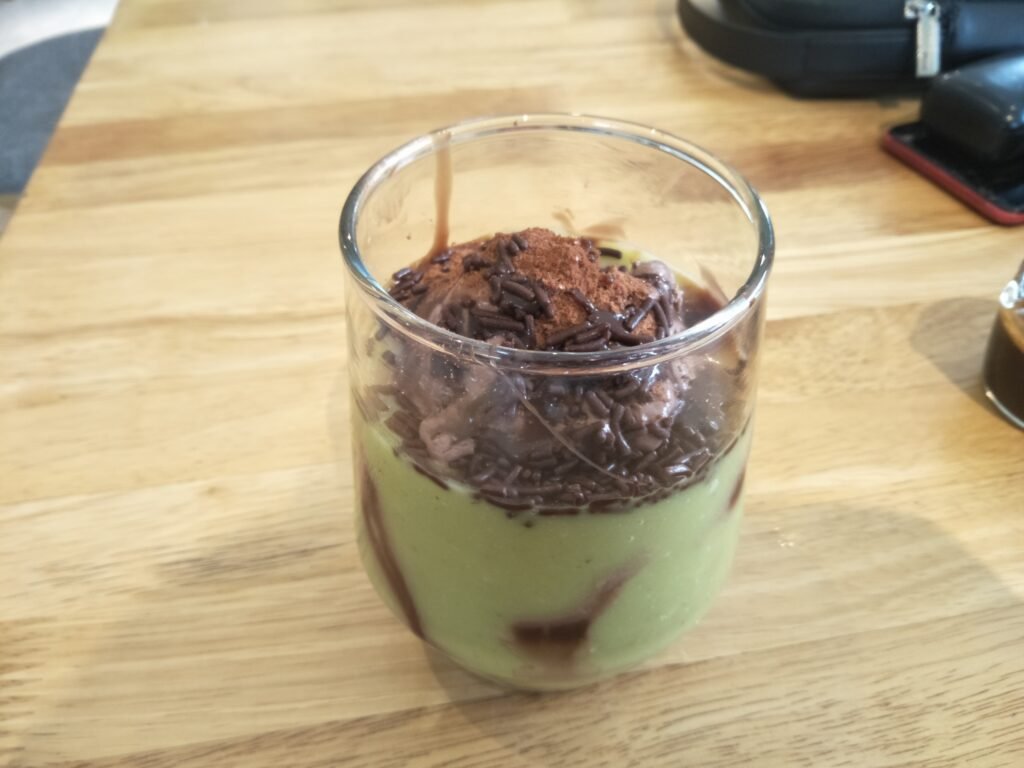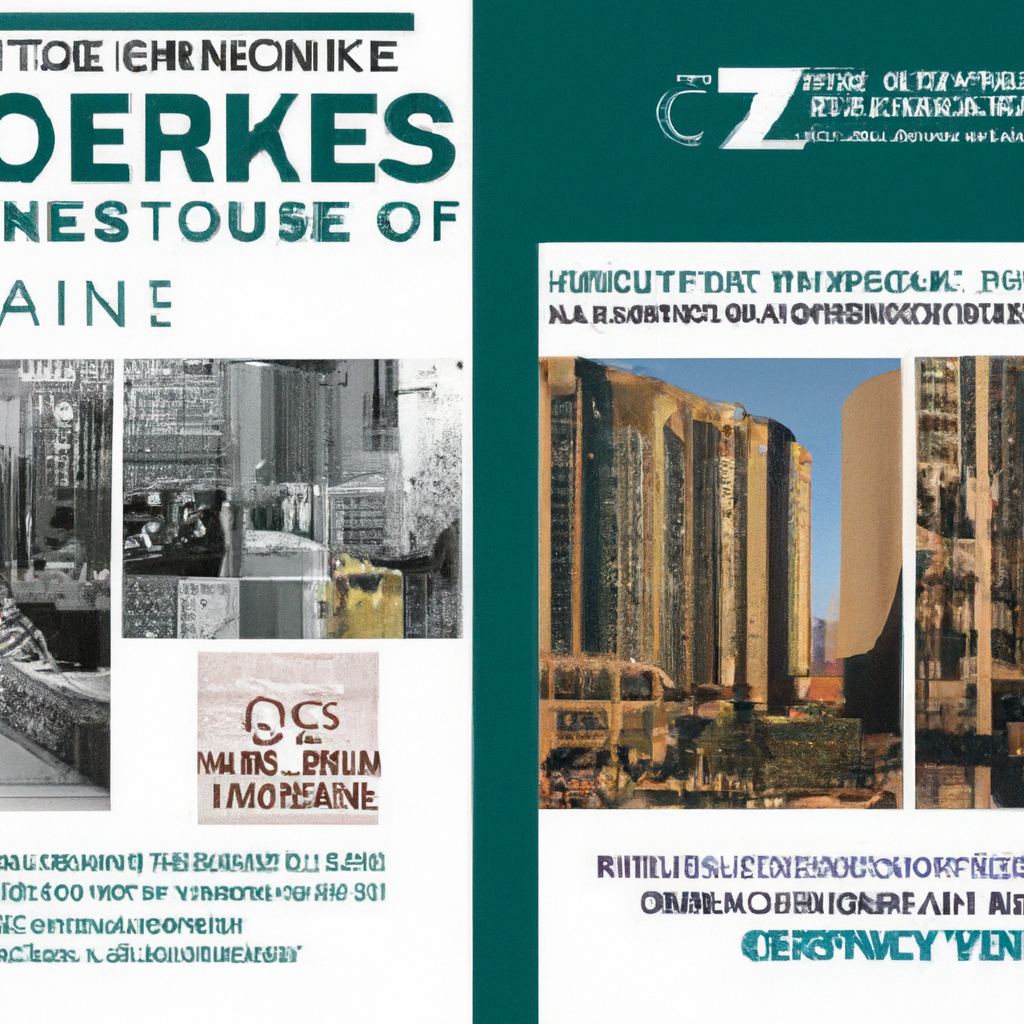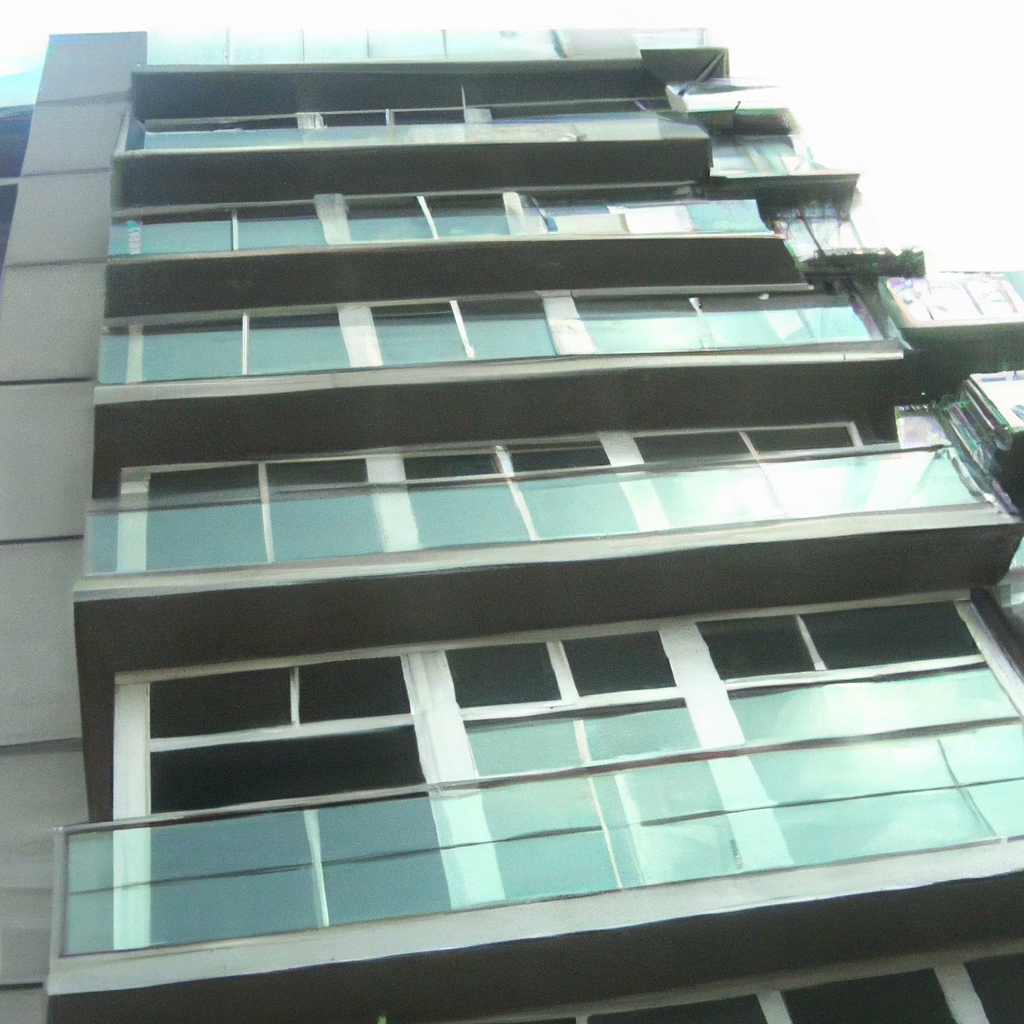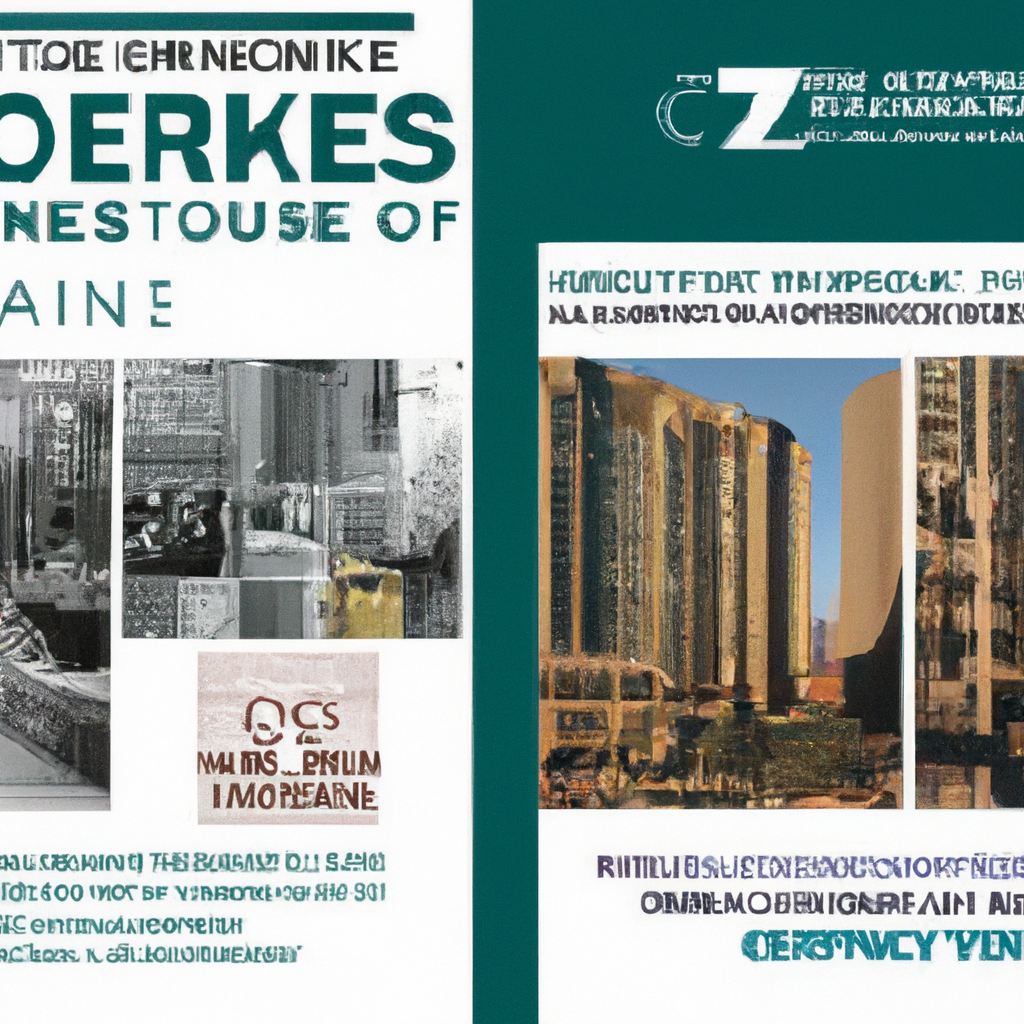Imagine walking down the bustling streets of a vibrant urban center, surrounded by towering buildings and a constant buzz of activity. As you navigate through the city, you may come across a unique type of development known as mixed-use developments. In this article, we will explore these fascinating urban complexes that combine residential, commercial, and recreational spaces all within a single location. Discover the benefits, challenges, and trends associated with mixed-use developments and gain insights into how they are shaping the future of urban living. Get ready to take a closer look at the innovative concept of mixed-use developments and what makes them so appealing to both residents and visitors alike.

Definition and Concept of Mixed-Use Developments
Understanding Mixed-Use Developments
Mixed-use developments refer to the urban planning concept where different types of land uses, such as residential, commercial, and public spaces, are combined within a single project or area. This creates a vibrant and dynamic environment that promotes live, work, and play opportunities for the community. In mixed-use developments, buildings are designed to serve multiple purposes and activities, fostering a sense of integration and connectivity between different aspects of urban life.
Historical perspective of Mixed-Use Developments
The roots of mixed-use developments can be traced back to ancient civilizations, where people lived and worked in close proximity. However, the modern concept of mixed-use developments emerged during the 19th century industrialization, when urban centers experienced rapid growth. These developments aimed to address the challenges posed by urbanization, such as overcrowding and lack of amenities. The inclusion of various land uses in a single project became a practical solution to optimize the use of limited urban space.
Advantages of Mixed-Use Developments
Mixed-use developments offer numerous advantages that contribute to the overall livability and sustainability of urban centers. Firstly, they create vibrant and diverse communities, fostering social interaction and a sense of belonging. Residents can conveniently access a variety of amenities and services, reducing the need for lengthy commutes. Additionally, mixed-use developments promote economic growth by attracting businesses and job opportunities. The integration of different land uses also leads to a more efficient use of resources and promotes environmentally friendly practices. Overall, mixed-use developments enhance the quality of life for urban dwellers and contribute to the overall vitality of the city.
Evolution of Mixed-Use Developments in Urban Centers
Transition From Single-Use Developments
Historically, cities were designed with a clear separation of land uses. Residential areas were distinct from commercial zones, resulting in segregated and monotonous urban environments. However, as urban centers faced the challenges of limited space and increased population density, the concept of mixed-use developments gained prominence. The transition from single-use developments to mixed-use developments allowed for a more efficient use of land, as well as a more vibrant and diverse urban landscape.
Influence of Urbanisation on Mixed-Use Developments
The rapid urbanization witnessed in the 20th century had a significant impact on the evolution of mixed-use developments. As more people migrated to cities in search of employment and better opportunities, the demand for housing, commercial spaces, and amenities skyrocketed. To accommodate this influx of urban residents, cities began embracing mixed-use developments as a means to address the growing needs of their populations. The combination of residential, commercial, and public spaces within a single project allowed for a harmonious coexistence of various functions and services, creating a more sustainable and inclusive urban environment.
Modern Day Adaptations of Mixed-Use Developments
In recent years, mixed-use developments have evolved further to cater to the changing needs and demands of urban residents. With technological advancements and a greater emphasis on sustainability, modern-day mixed-use developments integrate smart features and eco-friendly design principles. For instance, these developments may include energy-efficient buildings, pedestrian-friendly infrastructure, and the use of renewable energy sources. Moreover, there is a growing focus on creating mixed-use developments that prioritize health and wellbeing, incorporating elements such as green spaces, fitness amenities, and access to nature. These adaptations ensure that mixed-use developments continue to meet the evolving needs of urban communities.

Key Components of Mixed-Use Developments
Residential Aspects
Residential components form a fundamental aspect of mixed-use developments. These components typically include residential buildings such as apartments, townhouses, or condominiums. By incorporating various types of housing options, mixed-use developments can cater to the diverse needs and preferences of urban residents. The residential components are designed to provide comfortable and convenient living spaces, often incorporating amenities such as parks, gyms, and communal areas for social interaction. The inclusion of housing within mixed-use developments not only provides a place for people to live but also contributes to the overall vitality and cohesiveness of the community.
Commercial Aspects
The commercial aspects of mixed-use developments encompass a wide range of businesses and services. These can include retail outlets, offices, restaurants, entertainment venues, and healthcare facilities, among others. By integrating commercial spaces into mixed-use developments, residents and visitors have access to a diverse array of amenities and services, conveniently located within walking distance. This reduces the need for extensive commuting and enhances the overall convenience and accessibility of urban life. Additionally, the presence of commercial spaces in mixed-use developments promotes economic activity and contributes to the vibrancy of the urban center.
Public Spaces in Mixed-Use Developments
Public spaces play a crucial role in enhancing the quality of life in mixed-use developments. These spaces include parks, plazas, community gardens, and pedestrian-friendly streets. Public spaces serve as gathering points for residents, providing opportunities for social interaction, recreation, and relaxation. They also serve as catalysts for community engagement and cultural activities, fostering a sense of belonging and pride. The design of public spaces within mixed-use developments focuses on creating inclusive and inviting environments that promote community well-being and connectivity.
Impact of Mixed-Use Developments on Urban Life
Changes in Lifestyle
Mixed-use developments have had a profound impact on the lifestyle of urban residents. By bringing together different functions and amenities within a single project, these developments promote a more balanced and integrated way of living. Residents have the convenience of having their homes, workplaces, and recreational facilities within close proximity, eliminating the need for long commutes and enhancing work-life balance. This accessibility and convenience translate into more time for leisure and personal pursuits, leading to a higher quality of life for urban dwellers.
Economic Advantages
Mixed-use developments bring significant economic benefits to urban centers. By attracting businesses and creating job opportunities, these developments spur economic growth and contribute to local economies. The co-location of residential and commercial spaces promotes a synergy between different sectors, creating a dynamic business environment. Additionally, mixed-use developments are often sought after by investors, leading to increased property values and higher returns on investment. The economic advantages of mixed-use developments create a virtuous cycle of growth and prosperity for the urban center.
Reduction in Transportation and Commuting
One of the most evident impacts of mixed-use developments is the reduction in transportation needs and commuting distances. By integrating different land uses into a single project, mixed-use developments encourage residents and workers to rely less on private vehicles and instead utilize more sustainable modes of transportation. Walking, cycling, and the use of public transport become viable alternatives when essential amenities, workplaces, and services are within walking distance. This reduction in transportation and commuting not only decreases traffic congestion and environmental pollution but also promotes a healthier and more sustainable urban lifestyle.

Role of Mixed-Use Developments in Urban Planning
Planning and Zoning for Mixed-Use Developments
The success of mixed-use developments relies heavily on effective urban planning and zoning regulations. Urban planners must carefully consider factors such as land use compatibility, density, and infrastructure requirements when designing mixed-use projects. Appropriate zoning regulations can ensure that the different components of the development are harmoniously integrated, while also preserving the character and identity of the surrounding areas. By incorporating mixed-use developments into urban planning strategies, cities can optimize the use of land and promote a more sustainable and inclusive urban environment.
Contribution to Sustainable Urban Planning
Mixed-use developments play a significant role in sustainable urban planning. By concentrating different land uses within a compact area, these developments reduce the need for long-distance commuting and promote walkability. This, in turn, leads to a reduction in greenhouse gas emissions and a more sustainable transport system. The inclusion of green spaces and energy-efficient buildings further enhances the sustainability of mixed-use developments. Additionally, mixed-use developments contribute to social sustainability by creating communities with diverse social, economic, and cultural backgrounds, fostering social cohesion and integration.
Revitalisation of Cities and Downtown Areas
Mixed-use developments have been instrumental in reviving and revitalizing cities and downtown areas. In many urban centers, downtown areas were once characterized by empty streets and abandoned buildings. However, the introduction of mixed-use developments injected new life into these areas, attracting residents, businesses, and investments. The diversity of land uses and the vibrancy of mixed-use developments helped transform once-neglected areas into vibrant and thriving urban neighborhoods. By bringing people back to the city center, mixed-use developments contribute to the preservation of urban heritage and the revitalization of urban cores.
Examples of Successful Mixed-Use Development Projects
Mixed-Use Developments in Europe
Europe is home to numerous successful mixed-use development projects that have become iconic in their respective cities. For example, London’s King’s Cross redevelopment project has transformed a former industrial area into a vibrant, mixed-use neighborhood. The project combines residential, commercial, and public spaces, creating a thriving urban center. In Barcelona, the 22@ district is another notable mixed-use development project that has revitalized a former industrial neighborhood into a hub for innovation, design, and technology.
Mixed-Use Developments in North America
North America has witnessed the emergence of several remarkable mixed-use development projects. One such example is The Battery Atlanta, located adjacent to SunTrust Park, the home stadium of the Atlanta Braves. This mix of residential, retail, and entertainment spaces has created a vibrant destination for locals and visitors alike. In Toronto, the Toronto Waterfront revitalization project showcases a successful blend of residential, commercial, and public spaces, transforming the city’s waterfront into a dynamic and inclusive neighborhood.
Mixed-Use Developments in Asia
Asia is renowned for its innovative and large-scale mixed-use developments. In Singapore, Marina Bay Sands is an iconic mixed-use development that incorporates a hotel, casino, shopping mall, convention center, and more. The project has become a global symbol of modern architectural design and attracts millions of visitors each year. Another notable example is Tokyo Midtown in Japan, which seamlessly blends commercial, residential, and cultural spaces. These mixed-use developments in Asia showcase the immense potential of integrating different land uses to create vibrant and sustainable urban environments.

Challenges in Implementing Mixed-Use Developments
Financial and Investment Challenges
Implementing mixed-use development projects often poses financial and investment challenges. The complexity and scale of these projects require significant financial resources and long-term investments. Developers must navigate through various financing options and secure funding from multiple sources. Additionally, the uncertainty surrounding market demand and economic conditions poses risks to investors. Overcoming these financial and investment challenges requires careful planning, collaboration, and innovative financing models.
Logistical and Infrastructure Challenges
The implementation of mixed-use developments can present logistical and infrastructure challenges. Comprehensive planning is essential to ensure that the necessary infrastructure, such as utilities, transportation networks, and public services, can support the increased population density and diverse demands of these developments. The integration of various land uses may also require careful considerations to avoid conflicts and ensure harmonious coexistence. Addressing these logistical and infrastructure challenges requires close collaboration between developers, urban planners, and government authorities.
Regulatory and Legal Issues
Mixed-use development projects often encounter regulatory and legal hurdles. Zoning regulations, building codes, and preservation requirements can impose constraints on the design, construction, and operation of mixed-use developments. Compliance with these regulations demands meticulous attention to detail and expertise in navigating legal frameworks. Additionally, obtaining necessary permits and approvals can be time-consuming and complex, creating delays and adding to the overall costs of the project. Overcoming regulatory and legal issues requires a thorough understanding of local regulations and effective communication with relevant authorities.
Future Trends in Mixed-Use Developments
Influence of Technology
Technology is expected to play a significant role in shaping the future of mixed-use developments. Advancements in smart city technologies, including Internet of Things (IoT) devices, artificial intelligence (AI), and data analytics, can enhance the efficiency and sustainability of these developments. Smart buildings with energy management systems, intelligent parking, and automated waste management are just a few examples of how technology can be integrated into mixed-use developments. Furthermore, digital connectivity and the integration of online platforms can enhance the user experience and facilitate communication within these communities.
Shift Toward Health and Wellbeing-centric Designs
As society becomes increasingly health-conscious, mixed-use developments are embracing designs that promote health and wellbeing. Incorporating green spaces, pedestrian-friendly infrastructure, and access to recreational facilities are becoming standard practices. Additionally, there is a growing emphasis on incorporating wellness amenities, such as fitness centers, spas, and wellness clinics. These designs aim to create environments that foster physical and mental wellbeing, promoting a healthier and more balanced urban lifestyle.
Impact of Environmental Concerns on Design and Planning
Environmental concerns are influencing the design and planning of mixed-use developments. Sustainable and eco-friendly design principles are gaining importance, with an emphasis on energy efficiency, water conservation, and the use of renewable energy sources. Developers are incorporating green building certifications and standards into their projects, ensuring environmentally responsible practices. Furthermore, the integration of nature and biophilic design elements into mixed-use developments not only enhances the aesthetics but also provides numerous environmental benefits, such as improved air quality and biodiversity preservation.

Case Study: Mixed-Use Developments in London
History of Mixed-Use Developments in London
London has a rich history of mixed-use developments, dating back to the medieval period when commercial activities and residences were intermingled. The Victorian era witnessed the creation of grand mixed-use developments, such as the Royal Exchange and Covent Garden, which combined commercial spaces, residences, and public spaces. In the 20th century, iconic developments like the Barbican Centre integrated residential, cultural, and recreational facilities, becoming examples of successful mixed-use developments in the city.
Impacts and Limitations
Mixed-use developments in London have had significant impacts on the city and its residents. The integration of residential and commercial spaces has transformed neighborhoods, making them vibrant and diverse. The presence of cultural and recreational facilities within mixed-use developments has enriched the city’s cultural fabric and provided spaces for artistic expression. However, these developments have also faced criticisms, with concerns over gentrification and the displacement of lower-income residents. Balancing the needs of diverse communities and addressing socio-economic inequalities remains a challenge for mixed-use developments in London.
Future Prospects of Mixed-Use Developments in London
The future prospects of mixed-use developments in London are promising. With ongoing urban regeneration projects and a commitment to sustainable development, the city aims to create inclusive and vibrant neighborhoods through mixed-use developments. The integration of residential, commercial, and public spaces provides opportunities for social interaction, economic growth, and environmental sustainability. As London continues to evolve, mixed-use developments will play a pivotal role in shaping the city’s future and enhancing the quality of life for its residents.
The Role of Architectural Design in Mixed-Use Developments
Incorporating Versatility and Flexibility in Designs
Architectural design plays a crucial role in the success of mixed-use developments. Versatility and flexibility are key considerations in designing spaces that can accommodate multiple functions and activities. Buildings should be designed with adaptable layouts and modular elements that allow for future changes and repurposing. This ensures that the spaces can cater to evolving needs and trends, maximizing the lifespan and functionality of the development.
Optimising Space Utilisation
Efficient space utilization is essential in mixed-use developments to make the most of the available land. Architects must carefully plan layouts and consider the integration of vertical mixed-use elements, such as incorporating commercial spaces on the ground floor of residential buildings. Maximizing the use of outdoor spaces, such as rooftops and courtyards, can also enhance the overall livability and functionality of the development.
Integrating Sustainable and Eco-friendly Designs
Sustainability and eco-friendly design principles are integral to the success of mixed-use developments. Architects must incorporate energy-efficient technologies, renewable energy sources, and efficient waste management systems into the design. Additionally, the use of sustainable materials, green roofs, and rainwater harvesting systems can improve the environmental performance of the development. By integrating sustainable and eco-friendly designs, mixed-use developments can minimize their environmental footprint and contribute to a more sustainable urban future.
In conclusion, mixed-use developments have become an essential component of urban planning, offering a multitude of benefits to both residents and cities. These developments create vibrant and diverse communities, enhance economic growth, and reduce the reliance on transportation. Key components such as residential, commercial, and public spaces create a harmonious blend that promotes a balanced and integrated lifestyle. While challenges exist, such as financial constraints and regulatory issues, technological advancements and a shift towards sustainable design will shape the future of mixed-use developments. With iconic examples in cities across the globe, mixed-use developments continue to evolve and contribute to the revitalization and sustainability of urban centers.
